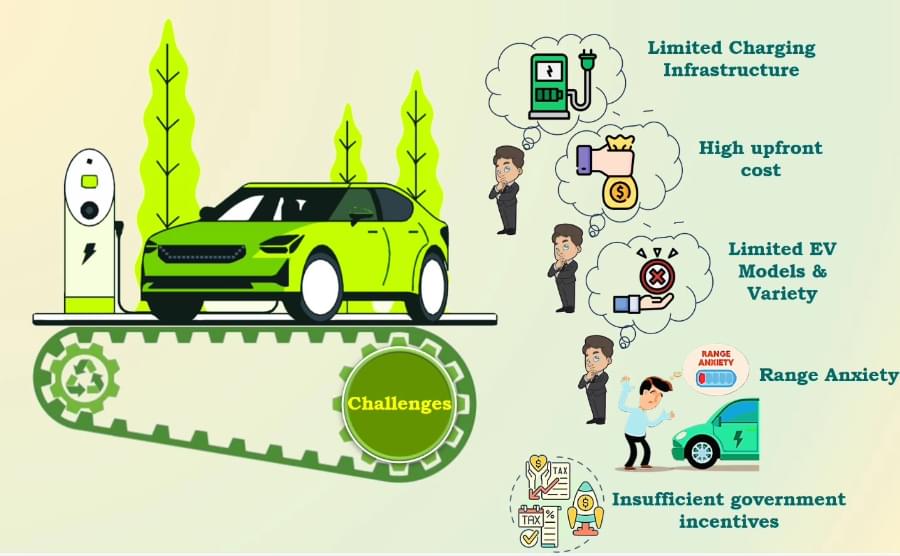The Environmental Impact of Electric Vehicles in the USA and Canada
wordpress-Default July 6, 2024 0 COMMENTS
Electric vehicles (EVs) are at the forefront of the transition to a more sustainable transportation system. As the world grapples with the realities of climate change, the environmental impact of EVs in the USA and Canada has become a critical topic of discussion. This blog explores how EVs contribute to reducing carbon emissions, their lifecycle environmental impact compared to traditional vehicles, and the role of renewable energy in powering them.
Reducing Carbon Emissions
One of the most significant environmental benefits of EVs is their potential to reduce greenhouse gas (GHG) emissions. Transportation is a major contributor to GHG emissions, accounting for about 29% of total emissions in the USA and 25% in Canada. Traditional internal combustion engine (ICE) vehicles emit significant amounts of carbon dioxide (CO2) and other pollutants. In contrast, EVs produce zero tailpipe emissions, which can substantially lower overall emissions when driven.
A study by the Union of Concerned Scientists found that, on average, EVs in the USA produce less than half the GHG emissions of comparable gasoline-powered cars over their lifetime, even when considering the emissions from electricity production. In Canada, where a significant portion of electricity comes from hydroelectric power, the benefits are even more pronounced. The Canadian Energy Regulator reports that about 60% of Canada’s electricity is generated from hydro, making the overall carbon footprint of EVs considerably lower than in regions relying more heavily on fossil fuels.
Lifecycle Environmental Impact
While the absence of tailpipe emissions is a clear advantage, it’s also essential to consider the full lifecycle environmental impact of EVs, including manufacturing, operation, and disposal.
Manufacturing: The production of EVs, particularly their batteries, is energy-intensive and generates significant emissions. Lithium-ion batteries, the most common type used in EVs, require mining and processing of raw materials like lithium, cobalt, and nickel. These processes can have substantial environmental impacts, including habitat destruction, water use, and pollution. However, advancements in battery technology and recycling are helping to mitigate these effects.
Operation: Once on the road, EVs offer substantial environmental benefits over ICE vehicles. Their efficiency is a key factor; EVs convert about 59-62% of the electrical energy from the grid to power at the wheels, whereas conventional gasoline vehicles only convert about 17-21% of the energy stored in gasoline. Additionally, EVs are often more efficient in stop-and-go traffic due to regenerative braking, which captures and reuses energy that would otherwise be lost.
Disposal and Recycling: The end-of-life phase for EVs presents both challenges and opportunities. Batteries need to be properly managed to avoid environmental harm. Fortunately, the recycling of EV batteries is a growing industry, with technologies being developed to recover valuable materials and reduce waste. Companies and researchers in both the USA and Canada are making strides in improving recycling processes to make them more efficient and environmentally friendly.
The Role of Renewable Energy
The environmental benefits of EVs are maximized when they are charged using electricity from renewable sources. Both the USA and Canada have been increasing their renewable energy capacity, although the mix of energy sources varies between the two countries.
USA: The USA has been gradually increasing its renewable energy capacity, with significant investments in wind, solar, and hydroelectric power. According to the U.S. Energy Information Administration, renewables accounted for about 20% of electricity generation in 2020, with a strong trend towards further growth. States like California and New York are leading the way with ambitious targets for renewable energy integration. As the grid becomes greener, the overall carbon footprint of EVs will continue to decrease.
Canada: Canada is a global leader in renewable energy, particularly in hydroelectric power. As mentioned earlier, approximately 60% of Canada’s electricity comes from hydroelectric sources, with additional contributions from wind, solar, and biomass. Provinces like British Columbia, Manitoba, and Quebec have particularly high percentages of renewable energy in their grids. This robust renewable energy infrastructure means that EVs in Canada are often charged with cleaner electricity, enhancing their environmental benefits.
Comparing Environmental Impact with Traditional Vehicles
When comparing EVs to traditional ICE vehicles, the environmental advantages of EVs become clear. ICE vehicles emit a range of pollutants, including CO2, nitrogen oxides (NOx), and particulate matter (PM), which contribute to air pollution and adverse health effects. EVs, on the other hand, do not produce tailpipe emissions, leading to improved air quality, especially in urban areas.
A 2020 study by Transport & Environment found that EVs produce significantly lower emissions over their lifetime compared to diesel and gasoline cars, even in countries with a high share of coal in their electricity mix. As the electricity grid becomes greener, the emissions associated with EVs will further decline, reinforcing their environmental superiority.
Challenges and Future Prospects
While the environmental benefits of EVs are substantial, several challenges remain:
- Battery Production and Raw Material Sourcing: The environmental impact of mining and processing materials for batteries is significant. Sustainable sourcing practices and advancements in recycling are crucial to addressing these issues.
- Charging Infrastructure: The availability of charging infrastructure is essential for widespread EV adoption. Both the USA and Canada are investing in expanding charging networks, but rural and remote areas still face challenges.
- Electric Grid Capacity: The increased demand for electricity from EVs requires an adaptable and robust grid. Investments in smart grid technologies and energy storage solutions are necessary to ensure grid stability.
- Consumer Awareness: Educating consumers about the environmental benefits and cost savings associated with EVs is vital. Government incentives and public awareness campaigns play a significant role in promoting EV adoption.
Electric vehicles offer a promising pathway to reducing the environmental impact of transportation in the USA and Canada. By lowering GHG emissions, improving air quality, and leveraging renewable energy sources, EVs can significantly contribute to a more sustainable future. While challenges remain, ongoing advancements in technology, policy support, and consumer awareness are paving the way for broader EV adoption. As both countries continue to invest in renewable energy and EV infrastructure, the environmental benefits of electric vehicles will only grow, making them a key component in the fight against climate change.








